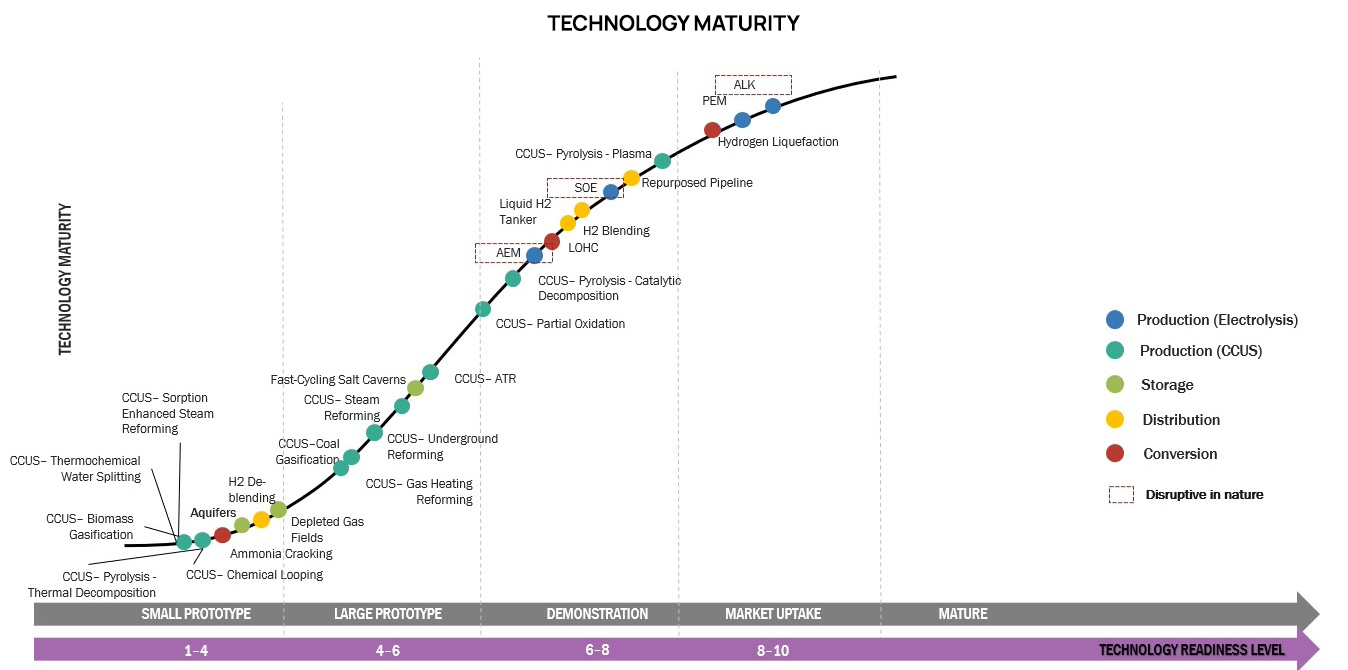TOP 10 HYDROGEN PRODUCTION COST OPTIMIZATION TECHNIQUES
Hydrogen production cost analysis is crucial for understanding the economic viability of hydrogen as an energy source. But do you know what are those Cost Optimization techniques, how to identify, which phase to implement?
Explore the top 10 Hydrogen Production Cost Optimization Techniques!
Leveraging renewable energy integration to optimize hydrogen production costs is a key strategy for achieving green hydrogen, which is produced using renewable energy sources and has lower environmental impacts.
- Electrolysis with Renewable Energy: The most direct way to reduce the cost of green hydrogen production hydrogen storage technologies is by using renewable energy sources like wind, solar, or hydropower to power the electrolysis process.
- Off-Peak Renewable Energy: Hydrogen production can be optimized by using excess or off-peak renewable energy. During periods of low electricity demand, when renewable sources often generate excess power, the electricity can be directed to electrolysis to produce hydrogen.
- Hybrid Systems: Combining renewable energy sources with hydrogen production facilities in hybrid systems can improve cost-effectiveness. For example, integrating a wind farm or a solar farm with an electrolysis plant allows for on-site, low-cost energy production.
- Energy Storage and Grid Balancing: Hydrogen production can act as a form of energy storage. Excess electricity generated from renewables can be used to produce hydrogen and store it for later use.
- Power Purchase Agreements (PPAs): Companies can enter into PPAs with renewable energy providers to secure a stable and cost-effective source of renewable electricity for their hydrogen production facilities.
- Electrolyzer Efficiency: Integrating renewable energy should be paired with efficient electrolysis technology to ensure that as much of the energy is converted into hydrogen as possible.
- Co-Location: Co-locating hydrogen production facilities with renewable energy installations reduces transmission and distribution losses, lowering energy costs. For example, building electrolysis plants near wind or solar farms can be advantageous.
- Hydrogen Storage: Renewable energy can also be used to generate hydrogen when supply exceeds demand, which can then be stored and used when energy demand is high, or renewable energy generation is low.
- Peak Shaving: Hydrogen can be used for peak shaving, which means producing hydrogen during periods of abundant renewable energy and using it during peak demand times to reduce electricity costs.
- Research and Development: Investing in research and development to improve the efficiency and cost-effectiveness of renewable energy technologies and hydrogen production processes is crucial.
- Government Incentives and Subsidies: Governments often provide incentives and subsidies for the deployment of renewable energy and green hydrogen technologies, which can significantly reduce the capital and operational costs.
- Grid Integration: Integration with the electrical grid allows hydrogen production facilities to take advantage of real-time electricity pricing and demand fluctuations. Producing hydrogen when electricity is cheaper can lower costs.
- Hydrogen Fuel Cells: The excess hydrogen produced can be used in fuel cells for electricity generation during peak periods, creating an additional revenue stream and improving the overall cost-effectiveness.
DOWNLOAD- https://www.marketsandmarkets.com/industry-practice/RequestForm.asp
What advancements in coal gasification technologies can contribute to cost optimization in hydrogen production?
Advancements in coal gasification technologies can play a significant role in cost optimization for hydrogen production, particularly in the production of blue hydrogen, which is produced from natural gas or coal with carbon capture and storage (CCS) to reduce carbon emissions.
- High-Efficiency Gasification: Advancements in gasification technologies have led to higher efficiency in converting coal into syngas, which is a mixture of hydrogen, carbon monoxide, and other gases. Improved efficiency reduces the energy and cost required to produce syngas, a key precursor for hydrogen production.
- Integration with CCS: The integration of carbon capture and storage (CCS) technologies is crucial for cost-effective blue hydrogen production. Efficient capture of carbon dioxide (CO2) emissions allows coal-based hydrogen production to meet environmental regulations and reduce associated costs, including carbon pricing or taxes.
- Oxygen-Blown Gasification: Oxygen-blown gasification processes have gained attention as they can enhance the combustion efficiency, reduce waste gas production, and produce a syngas with a higher hydrogen content. This results in less energy consumption for hydrogen separation and purification.
- Advanced Gasifier Design: Modern gasifiers are designed to operate at higher temperatures and pressures, leading to improved gasification efficiency. Advanced designs also allow for more stable and reliable operation, which reduces downtime and maintenance costs.
- Hybrid Gasification Systems: Hybrid systems combine various feedstocks and technologies to optimize hydrogen production. For example, integrated gasification combined cycle (IGCC) plants combine coal gasification with natural gas to enhance efficiency and flexibility.
- Improved Sulfur and Impurity Removal: Advanced coal gasification technologies incorporate efficient gas cleaning systems to remove sulfur compounds and other impurities from the syngas. This is essential for protecting downstream equipment and improving the overall economics of hydrogen production.
- Waste Heat Recovery: Utilizing waste heat generated during the gasification process for other applications, such as electricity generation or industrial processes, can improve the energy efficiency of the overall system and reduce operating costs.
- Optimized Process Controls: Advanced control systems and automation technologies can help optimize gasification processes, ensuring they operate at their highest efficiency, reducing fuel consumption, and minimizing downtime.
- Gasifier Scale-Up: Scaling up gasification technologies can lead to economies of scale, which can result in lower capital and operational costs per unit of hydrogen produced.
- Materials Advancements: Advancements in materials science can lead to more durable and efficient components for gasification reactors, reducing maintenance and replacement costs.
- Gasifier Flexibility: Flexible gasifiers can handle a range of feedstocks, including different types of coal and biomass. This flexibility can help optimize feedstock costs and reduce reliance on a single feedstock source.
- Hydrogen Separation Technologies: Integration of advanced hydrogen separation technologies, such as pressure swing adsorption (PSA) and membrane separation, can improve the efficiency and cost-effectiveness of producing high-purity hydrogen from syngas.
- Long-Term Stability and Reliability: Ensuring the long-term stability and reliability of gasification systems reduces the frequency of shutdowns and maintenance, resulting in lower operational costs.
- Feedstock Selection: Careful selection of feedstock quality and composition can optimize gasifier performance. High-quality feedstocks, with lower impurity content, can improve gasifier reliability and reduce operational costs.
- Waste Utilization: Using waste products or industrial byproducts as feedstock for gasification can not only reduce feedstock costs but also contribute to a more circular and sustainable economy.
READ MORE- https://www.marketsandmarkets.com/industry-practice/hydrogen/hydrogen-production-cost-analysis







